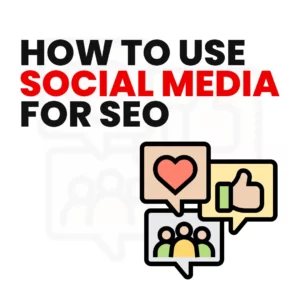A strong Call-to-Action (CTA) can be your secret tool for making sales and meeting your business goals. On your website, a well-designed CTA can get your audience to take action, increasing your conversion rates. In this article, we’ll discuss how to create effective CTA that gets people to do what you want.
We’ll look at the most critical parts of a CTA that make it stand out, discuss design considerations for different platforms, and give you tips and best practices to make your CTA as effective as possible. By the end of this article, you’ll know how to create effective CTA that get people’s attention and lead to results that matter.
Are you ready to discover what your CTAs can do and take your results to a new level? Let’s dive in!

What is a call to action?
When you go to a website, read an email, or look at social media, you often see buttons or words that say “Sign Up Now,” “Buy Now,” or “Learn More.” Call-to-Action (CTA) parts are the words that tell people what to do.
A call to action (CTA) is an intelligent marketing tool that gets people to do something specific, like buy something, sign up for a newsletter, or download a resource. It is a straight call to action that leads your users to the next step in their journey with your brand.
What do CTAs do?
CTAs are essential for driving conversions because they show people how to interact with your brand and take the action you want them to take. A well-written call to action (CTA) is like a persuasive spark that gets people from passive observers to active players.
By strategically placing CTAs across all of your marketing platforms, you can lead your audience to take actions that help you reach your business goals, such as getting more leads, selling more, or keeping customers coming back.
How CTAs are used in different situations
CTAs can look different and be used differently depending on your marketing platform. For example, a website or landing page. For example, CTAs might be big buttons with appealing text telling users to “Start Your Free Trial” or “Book Now.”
In emails, CTAs can be shown as hyperlinked text or eye-catching buttons that say things like “Shop the Sale” or “Claim Your Discount.” Even on social media sites, CTAs can be embedded in posts or ads to tell users to “Follow Us,” “Like,” or “Shop Now.”
Many things could happen, and the key is ensuring that you create effective CTA that fits the context and action you want on each site.
Key properties of an effective CTA
For a CTA to be effective and drive conversions for you, it needs to have the three fundamental properties below;
1. Must be clear and easy to use
For a call to action (CTA) to be successful, it must be clear. Your audience should be able to tell immediately what you want them to do. Keep your CTA copy short and clear, and use wording encouraging people to act.
Use specific words instead of vague statements that could lead to confusion. For example, instead of a generic “Click Here” button, choose a more specific and appealing CTA like “Get Your Exclusive Access” or “Unlock the Secrets.”
2. It must stand out from other page content
A good CTA must grab your users’ attention and stand out from the rest of the page. Placement and size are critical in this case. Put your CTA in a place that is easy to see, especially above the fold, or in a place that stands out on your website or email.
Make sure the call to action stands out clearly by using contrasting colours or design techniques that draw the eye. Remember that you want your CTA to be evident and hard to miss.
3. It should align easily with your content
A good call to action (CTA) fits in well with the content or offer it goes with. It should make sense in the context of the user’s trip and suggest the next step that makes sense. Personalization and targeting can make your calls to action (CTAs) more valuable. By knowing what your audience likes and how they act, you can make your CTAs fit their needs and hobbies. For example, if a user has been looking for a specific product, a CTA like “Shop Now for Your Favourite Item” will be more effective than a general call to action.
Read Also: Best Practices for Creating User-Friendly Navigation Menus
Designing CTAs for websites and landing pages
When making CTAs for your website or landing pages, consider where they go and how they look. Placement “above the fold,” which means putting the call to action where it can be seen without moving, tends to get better results.
Make sure your call-to-action stands out clearly by using colours that are different from each other and catch the eye. Make your buttons big enough that they are easy to click, and think about adding extra visual cues like arrows or icons to help users find the CTA. Remember that the goal is to make it easy for users to find and act on your CTA.
Why you should test CTAs
CTA optimization can’t be done without A/B testing. It lets you compare two or more call-to-action copies to see which gets more conversions. You can learn about your audience’s tastes and behaviours and make data-based decisions to improve your CTAs. Testing elements like copy, colour, placement, and design can help you find the best combo for your audience.
Key metrics to track and analyze
To determine your CTA’s performance, track and analyze key data to determine how well your CTAs are doing. Conversion rate is the most vital metric to keep an eye on. The Click-through rate shows how many people clicked on the CTA and how well it got people’s attention.
Also, you should track bounce rates and engagement data to see how users interact with your CTA and to see if any changes need to be made to improve engagement and conversion.
Optimize CTAs based on data insights
Once you have enough data from A/B testing, it is time to use what you’ve learned to improve your CTAs. Start by changing the parts of your site that had the most considerable effect on sales. For instance, if you found that a particular colour change raised click-through rates by a lot, use that colour for all of your CTAs. Always test and improve your CTAs by making small changes to their style, copy, and placement to make them work better. Remember that optimization requires you to keep an eye on things, look at data, and make small changes based on your learning.
CTA best practices
Below are some easy but powerful best practices for making Call-to-Action (CTA) elements that work well. If you’re a small business owner, a marketer, or a website owner, knowing these best practices will help you write CTAs that make people want to act.
1. Maintain consistency across the user journey
Keep your CTAs the same throughout the user’s journey to make the experience smooth and understandable. Ensure the CTA’s language, style, and overall message match the previous content or offer. Consistency helps users believe you and know what to expect when clicking on CTAs. This makes it more likely to convert.
2. Use urgency and scarcity
Use urgency and shortage in your calls to action to make people feel they must act immediately. Offers that are only good for a short time, countdown timers, or phrases like “Limited stock” or “Only available today” can make people afraid of losing out and encourage them to act quickly. But use these strategies carefully and honestly because users may become sceptical if they think there isn’t enough of something or that time is running out.
3. Add social proof and trust indicators
Use social proof and trust signs in your calls to action (CTAs) to make your audience feel confident. Putting up recommendations, customer reviews, or trust badges can help ease doubts and make your offer seem more trustworthy. Adding phrases like “Join thousands of happy customers” or “As seen in reputable publications” can help build trust and encourage users to take the action you want.
Read Also: How to Build an Excellent Website for Startup in Nigeria
Conclusion
Now you know how to create effective CTA that increases conversion on your website. Writing compelling CTAs that connect with your audience is vital to get leads, boost sales, and get customers involved. Now is the time to act on what you’ve learned and put it to use.
Are you ready to use your CTAs to their fullest potential and boost conversions?
As a web designer in Nigeria, I help my clients design CTAs that are visually appealing and well-thought-out from a business perspective.



